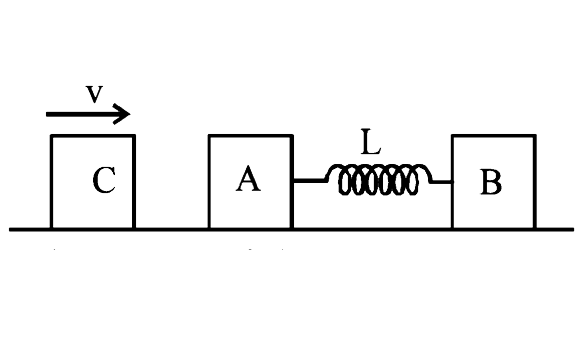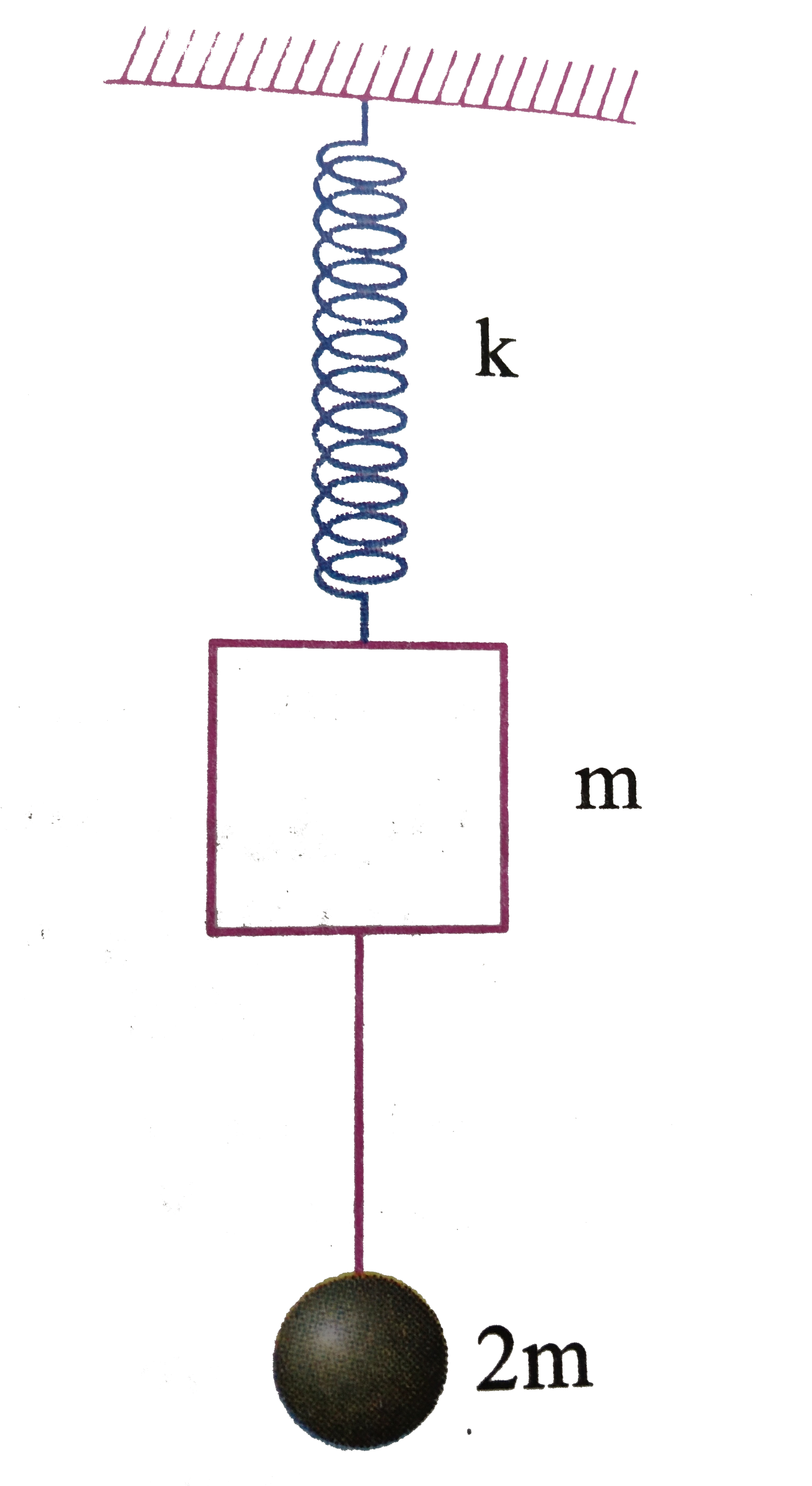Complete Solutions to MULTIPLE ANSWER QUESTIONS of chapter OSCILLATIONS of Class 11 book with complete answers and questions
| Class 11 | PHYSICS |
| Chapter | OSCILLATIONS |
| NARAYANA | MULTIPLE ANSWER QUESTIONS |
| Number Of Questions | 23 |
| Academic Year | 2023-24 |
The rotation of earth about its axis is
View SolutionMotion of a ball bearing inside a smooth curved bowl, when released from a point slightly above the lower point is
View SolutionDisplacement vs. time curve for a particle executing S.H.M. is shown in figure. Choose the correct statements

View SolutionWhich of the following statements is/are true for a simple harmonic oscillator?
View SolutionThe displacement -time graph of a particle executing `SHM` is shown in figure. Which of the following statements is/are true ?

View SolutionA body is performing `SHM`, then its
View SolutionA particle is in linear simple harmonic motion between two points `A` and `B 10cm` apart (figure). Take the direction form `A` to `B` as positive direction and choose the correct statements.
`AO =OB = 5cm`
`BC =8cm`

View SolutionTwo blocks A and B, each of mass m, are connected by a masslesss spring of natural length L and spring constant K. The blocks are initially resting on a smooth horizontal floor with the spring at its natural length, as shown in fig. A third identical block C, also of mass m, moves on the floor with a speed v along the line joining A and B, and collides elastically with A. Then

View SolutionA coin of mass `m` is placed on a horizontal platform which is undergoing `S.H.M.` about a mean position `O` in horizontal plane. The force of friction on the coin is f. while the coin does not slip on the platform `f` is
View SolutionFunction `x=Asin^(2)omegat+Bcos^(2)omegat+Csinomegat cos omegat` represents simple harmonic motion,
View SolutionA simple pendulm has a length L and a bob of mass M. The bob is vibrating with amplitude a .What is the maximum tension in the string?
View SolutionThree simle harmionic motions in the same direction having the same amplitude (a) and same period are superposed. If each differs in phase from the next by `45^@`, then.
View SolutionA thin uniform rod of length `L = 100cm` is to be pivoted about some point passing through the rod is allowed to swing as a physical pendulum. For this situation mark the correct statement (s) [take `g = 10m//s^(2)]`
View SolutionA particle performing simple harmonic motion undergoes unitial displacement of `(A)/(2)` (where A is the amplitude of simple harmonic motion) in 1 s. At `t=0`, the particle may be at he extreme position or mean position the time period of the simple harmonic motion can be
View Solution
A simple pendulum consists of a bob of mass m and a light string of length l as shown in the fig. another identical ball moving with the small velocity `v_0` collides with the pendulum's bob and sticks to it. For this new pendulum of mass 2 m, mark out the correct statements (s).
View Solution
Figure. (a) shows a spring of force constant k fixed at one end and carrying a mass m at the other end placed on a horizontal frictionless surface. The spring is stretched by a force F. Figure. (b) shows the same spring with both endsf free and a mass m fixed at each free end Each of the spring is streched by the same force F. The mass in case (a) and the masses in case (b) are then released. Which of the following statements are true?
View SolutionTwo independent harmonic oscillators of equal mass are oscillating about the origin with angular frequencies `(omega_1) and (omega_2) and have total energies (E_1 and E_2), respectively. The variations of their momenta (p) with positions (x) are shown (s) is (are).

View SolutionA block with mass (M) is connected by a massless spring with stiffness constant (k) to a rigid wall and moves without friction on a horizontal surface. The block oscillates with small amplitude A about an equilibrium position (x_0). Consider two cases : (i) when the block is at (x_0) , and (ii) when the block is at `x = x_0 + A`. In both the cases, a particle with mass m(lt M) is softly placed on the block after which they strick to each other. Which of the following statement (s) is (are) true about the motion after the mass (m) is placed on the mass (M) ?
View SolutionTime period for an oscillatory periodic motion without an implusive force is
View SolutionA particle oscillates about the stable equilibrium position `x_(0)` with a small amplitude subjected to a force that has an associated potential energy `u(x)`. Which of the following about `u(x)` is true (no implsive force)
View SolutionThree cars of mass `m` each are held at rest on an inclined smooth railway track of inclination `theta` using an elastic cable (Assume that the cable behaves like a spring even during compression) that is parallel to the incline. The cable is observed to stretch by a length `x` just before a coupling breaks, detaching one of the cars.

View SolutionA bob of mass `2m` hanges by a string attached to the block of mass `m` of a spring blocks syetem. The whole arrangement is in a state of equilibrium. The bob of mass `2m` is pulled down slowely by a distance `x_(0)` and released.

View SolutionA body of mass `m` is in a field where its potential energy is given by `U = ax^(3) +bx^(4)`, where `a` and `b` are positive constants. Then, [The body moves only along `x`]
View Solution
MULTIPLE ANSWER QUESTIONS questions and complete solutions for chapter OSCILLATIONS of NARAYANA PHYSICS (HINGLISH) of Class 11
All Exercises from NARAYANA Class 11 PHYSICS OSCILLATIONS
- ASSERTION & REASON QUESTIONS
- C. U . Q
- C.U.Q
- DAMPED AND FORCED OSCILLATIONS
- DAMPED OSCILLATIONS
- DISPLACEMENT
- DISPLACEMENT, VELOCITY AND ACCELERATION
- ENERGY OF A PARTICLE EXECUTING SHM
- EVALUATE YOURSELF - 1
- EVALUATE YOURSELF - 2
- EVALUATE YOURSELF - 3
- EVALUATE YOURSELF - 4
- EXERCISE - I (C.W)
- EXERCISE - I (H.W)
- EXERCISE - II (C.W)
- EXERCISE - II (H.W)
- EXERCISE - III
- EXERCISE - IV
- ILLUSTRATION
- INTEGER ANSWER QUESTIONS
- LEVEL -I (C.W)
- LEVEL -II (C.W)
- LEVEL -III
- LEVEL-I (H.W)
- LEVEL-II (H.W)
- LEVEL-V
- LEVEL-VI
- MULTIPLE ANSWER QUESTIONS
- NCERT BASED QUESTIONS
- OSCILLATIONS DUE TO A SPRING
- Passage
- Passage-I
- Passage-II
- Passage-III
- Passage-IV
- Passage-IX
- Passage-V
- Passage-VI
- Passage-VII
- Passage-VIII
- Passage-X
- Passage-XI
- Passage-XII
- Passage-XIII
- SIMPLE PENDULUM
- SINGLE ANSWER QUESTIONS
- Solved Example
- VELOCITY AND ACCELERATION